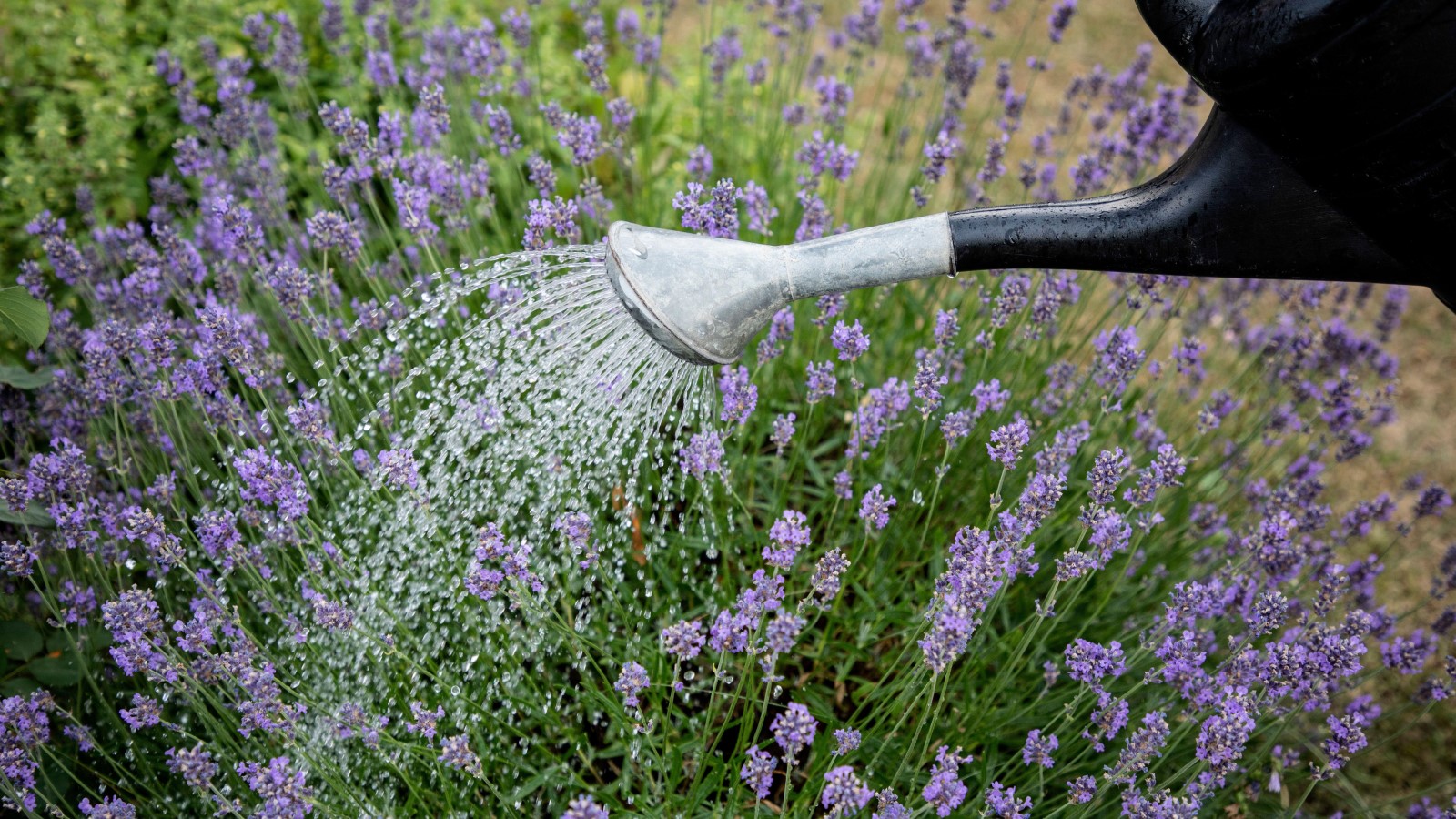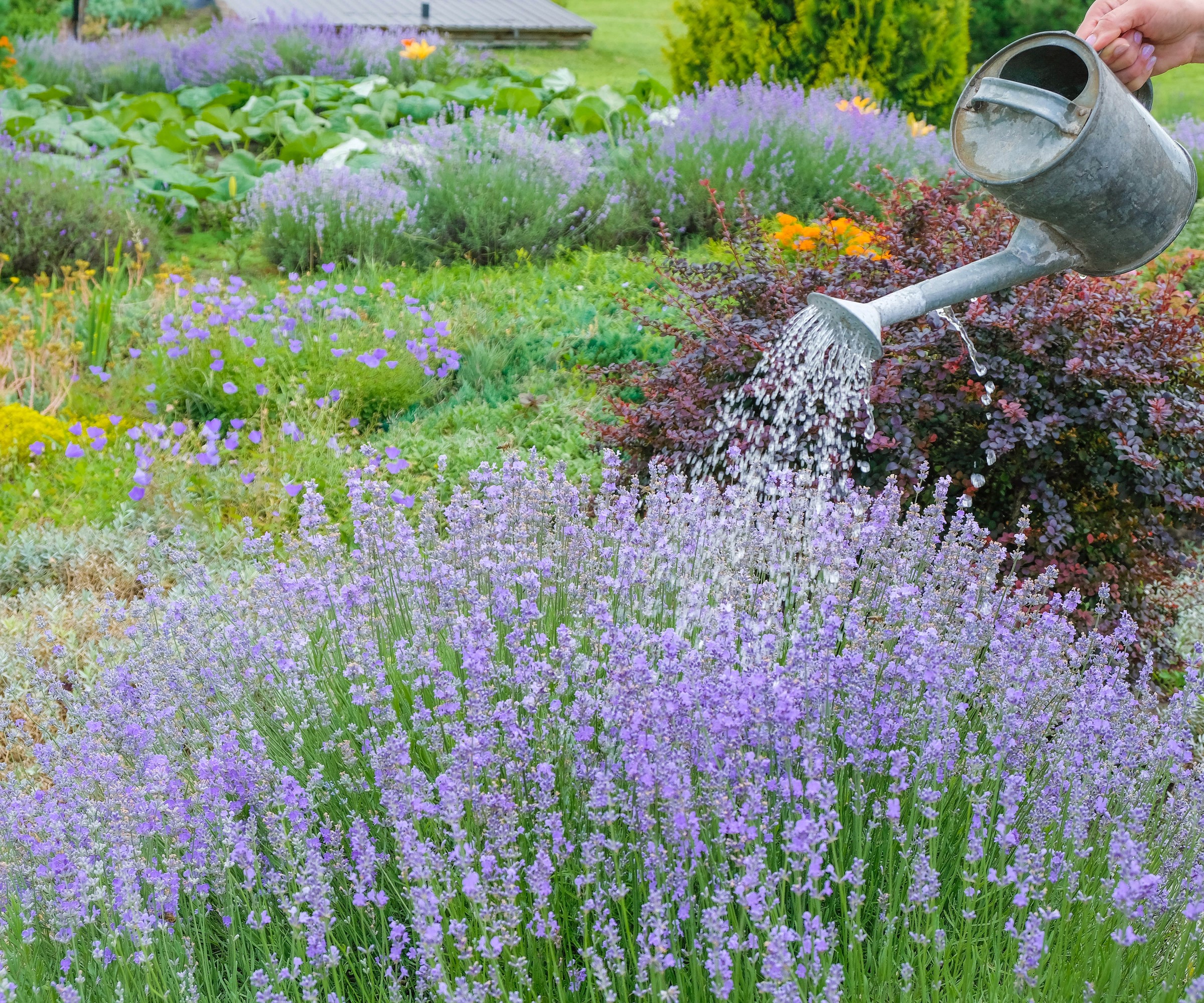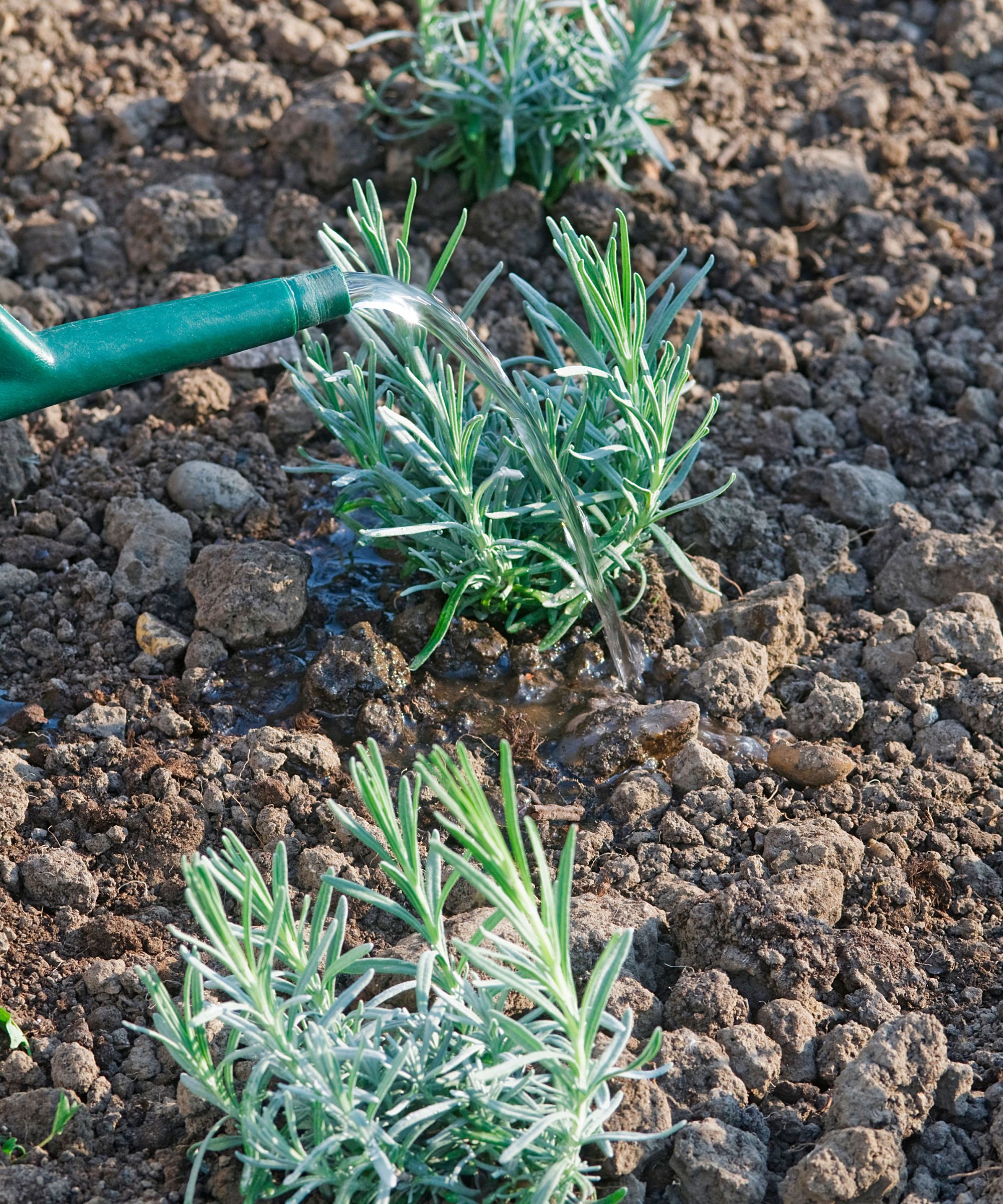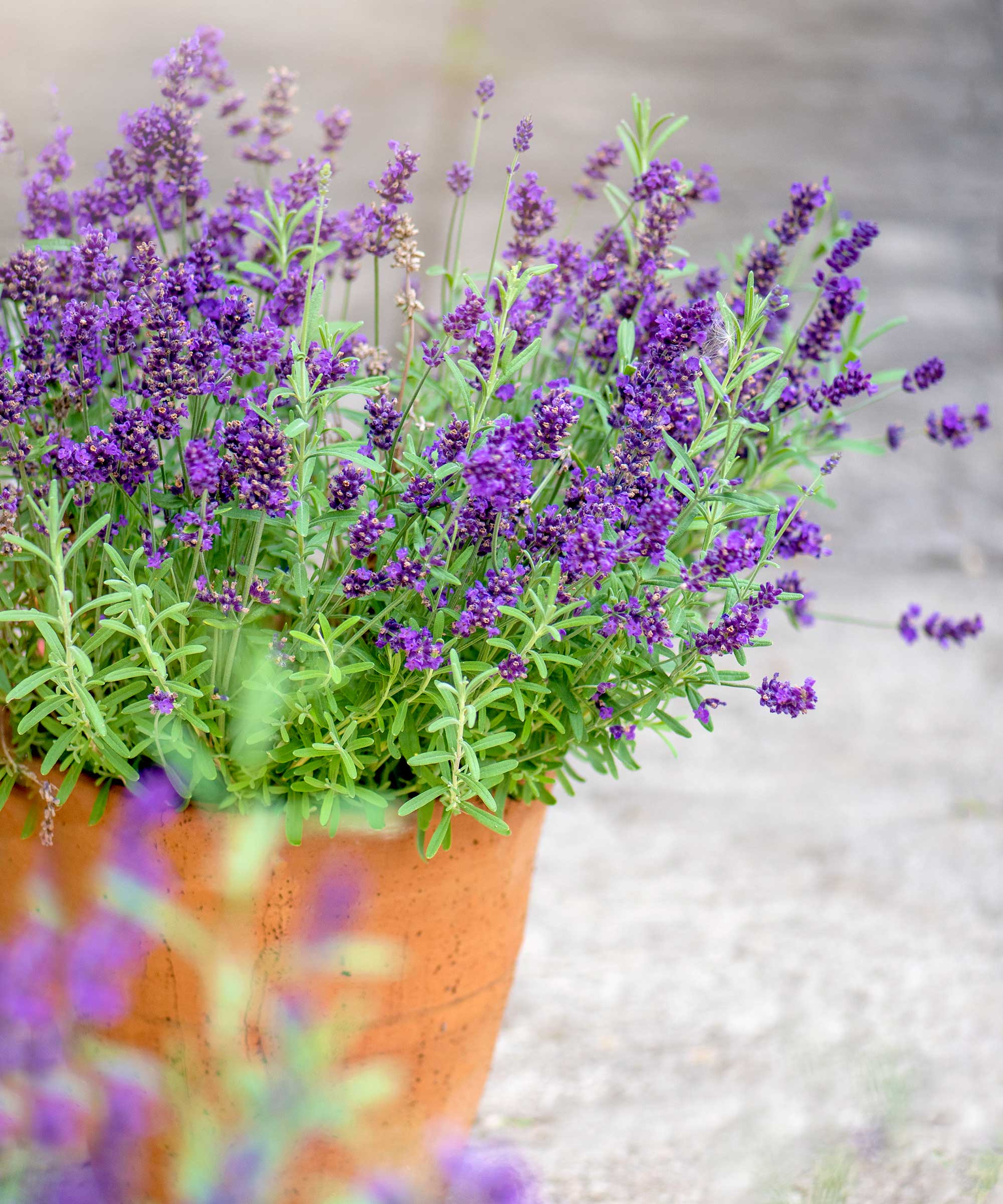Expert tips for watering lavender to avoid ‘loving it to death’
Lavender is a drought-tolerant plant that only requires watering during prolonged dry spells


Q: I have got a number of lavender plants growing in beds in my backyard. They are around three years old and I water them regularly during the summer. I was wondering if I am looking after my plants properly and, if not, how often should I water lavender?
Lavender is a hugely popular plant that is very versatile. It offers delicate foliage and blooms together with a fantastic fragrance and is often seen in flower beds and herb beds, while it also works as a plant to line paths or for informal hedging.
If you already grow this aromatic herb, or want to learn more about how to grow lavender, then it is important to know the correct guidelines for watering lavender. It is a plant that does not require lots of water, whether being grown in the ground or pots, and overwatering lavender can lead to many problems.

Lavender only requires watering in extremely dry periods
How often should you water lavender in the ground?
Lavender is a very drought tolerant plant that hails from the Mediterranean, an area where there is a lot of heat and the soil is poor. It is a plant that does not need much watering and overwatering is a common lavender growing mistake. Water it too much and it can cause root rot, which can ultimately lead to premature death.
Hillary Alger, Flower Product Manager at Johnny’s Selected Seeds, describes lavender as a ‘low-water needs plant’ that is particular about its needs. She adds: ‘Plants need ample water, but containers and soil should be well drained. Lavender doesn’t like to have roots constantly drenched.’
After you have planted lavender, it does need to be regularly watered to help it bed into its new surroundings. Any newly planted lavender should be watered once or twice a week during its first summer.
When the lavender is established then its watering requirements drop. Lavender is a plant that puts out a taproot and has lots of fine roots extending off from this. It has a good network of roots that can access water deep in the soil.
It can tolerate dry periods and only really needs watering during extended periods of drought, for example, if there has been no rain for two weeks. It makes lavender perfect for drought tolerant planting ideas, as it does not need regular watering when established. When it comes to winterizing lavender, plants growing outdoors do not need watering during the winter months.
Certain times of the day are better for watering lavender, and not thinking about the best times to water is a common garden watering mistake. Susan Betz, herb expert, author and member of the International Herb Association, says of watering lavender: ‘Morning is the best time to water, be careful to avoid wetting leaves in the day's heat and before sundown. Water left on foliage after dark will encourage fungal disease.’

Hillary Alger has over 15 years' experience in plant research. She is currently the Product Manager for several crops at Johnny’s Selected Seeds, including flowers, herbs, and microgreens.

Susan Betz has been actively involved in growing and using herbs to educate the public about gardening and the natural world for more than 35 years. She is an Honorary Master Gardener, a member of the International Herb Association, Garden Communicators, the Ecological Landscape Alliance, and the National Garden Bureau. Susan is a life member of the Herb Society of America (HSA) and received The Society’s Helen D. Conway, Little Medal of Honor, in 2018.

Newly planted lavenders will require regular watering to help them establish
How often do you need to water lavender in pots?
When growing lavender in pots it will need more regular watering than when planted in the ground. However, you still need to be careful not to overwater. Judging when to water plants in containers can be tricky to master, especially as lavender has lower water requirements than many other plants.
Tabar Lindsay Gifford, Customer Experience & Partnership Cultivator for American Meadows, says that overwatering, also known as ‘the loving it to death method’, is one of the most common mistakes when caring for lavender.
She says: ‘Lavenders in pots do need to be watered regularly but let them dry out completely between waterings. It’s best to do deep and less frequent waterings to keep your lavenders happy, healthy and thriving.’
When watering plants in containers, use your fingers to check the moisture levels down in the pot. It may look dry on the surface but still be very moist down near the roots.
Lavender in pots should be left to get moderately dry between watering and will need a deep water every two weeks. You should see the water run out the drainage holes at the bottom of the pot, that ensures the root ball will have had a good soak. Wait a few weeks until the soil looks dry again before another deep watering.
If you want to be able to precisely measure the moisture levels deep down in a container, then a soil moisture meter can provide quick results. One good example is the XLUX Long Probe Deep Use Soil Moisture Meter, available at Amazon, which can quickly and easily give instant results and is ideal for both deeper pots or for use out in the yard.

Lavender growing in pots should be left to dry out and then watered thoroughly
FAQs
Can lavender be overwatered?
Yes, lavender can be overwatered both in the ground and when it is being grown in pots. Watering the plant too regularly, or failing to provide it with soil that drains very well, can both contribute to lavender becoming overwatered. The signs that a lavender plant is being overwatered will include yellowing or browning leaves, drooping leaves and stems, mold on the surface of the sodden soil, or a rotten smell.
Will lavender come back if overwatered?
Thankfully, an overwatered lavender can recover. The first move is to stop adding any moisture to the plant until the soil dries out, this may take several weeks but the lavender’s well-developed roots will be capable of sourcing any moisture if it needs it. Do not water the plant again until the soil is completely dry and then put together a new watering schedule to avoid overwatering happening again.
If you are growing the lavender in pots, also hold back on watering and consider moving your lavender to the sunniest spot possible to help it dry out. You can repot the plant and add more grit to promote extra drainage. Make sure any container has drainage holes in the bottom and you give lavender a very free-draining soil mix. If you see any signs of root rot when repotting the plant, then prune off those sections.
Lavender is a really low-maintenance aromatic herb that is perfect for any herb garden ideas. Once established, it is really simple to look after and will only need watering in really dry periods. Keep up with regularly pruning lavender to keep them in shape and you can enjoy a fuss-free great harvest of lavender every year.
Sign up to the Homes & Gardens newsletter
Design expertise in your inbox – from inspiring decorating ideas and beautiful celebrity homes to practical gardening advice and shopping round-ups.

Drew’s passion for gardening started with growing vegetables and salad in raised beds in a small urban terrace garden. He has worked as a professional gardener in historic gardens and specialises in growing vegetables, fruit, herbs, and cut flowers as a kitchen gardener. That passion for growing extends to being an allotmenteer, garden blogger, and producing how-to gardening guides for websites. Drew was shortlisted for the New Talent of the Year award at the 2023 Garden Media Guild Awards.
-
 Garden experts warn against overcrowding flower beds – why this on-trend look is the worst thing you can do
Garden experts warn against overcrowding flower beds – why this on-trend look is the worst thing you can doIt's tempting to create an abundant, overflowing garden bed, but it can limit your plants in more ways than one
By Tenielle Jordison Published
-
 Grace Kelly's former living room set the blueprint for quiet luxury – you can explore her NYC penthouse (listed for $3.25 million)
Grace Kelly's former living room set the blueprint for quiet luxury – you can explore her NYC penthouse (listed for $3.25 million)A unit in the storied Manhattan House, where Grace Kelly, Benny Goodman, and Shirley Jackson have lived, has hit the market – it's a masterclass in neutrals
By Hannah Ziegler Published